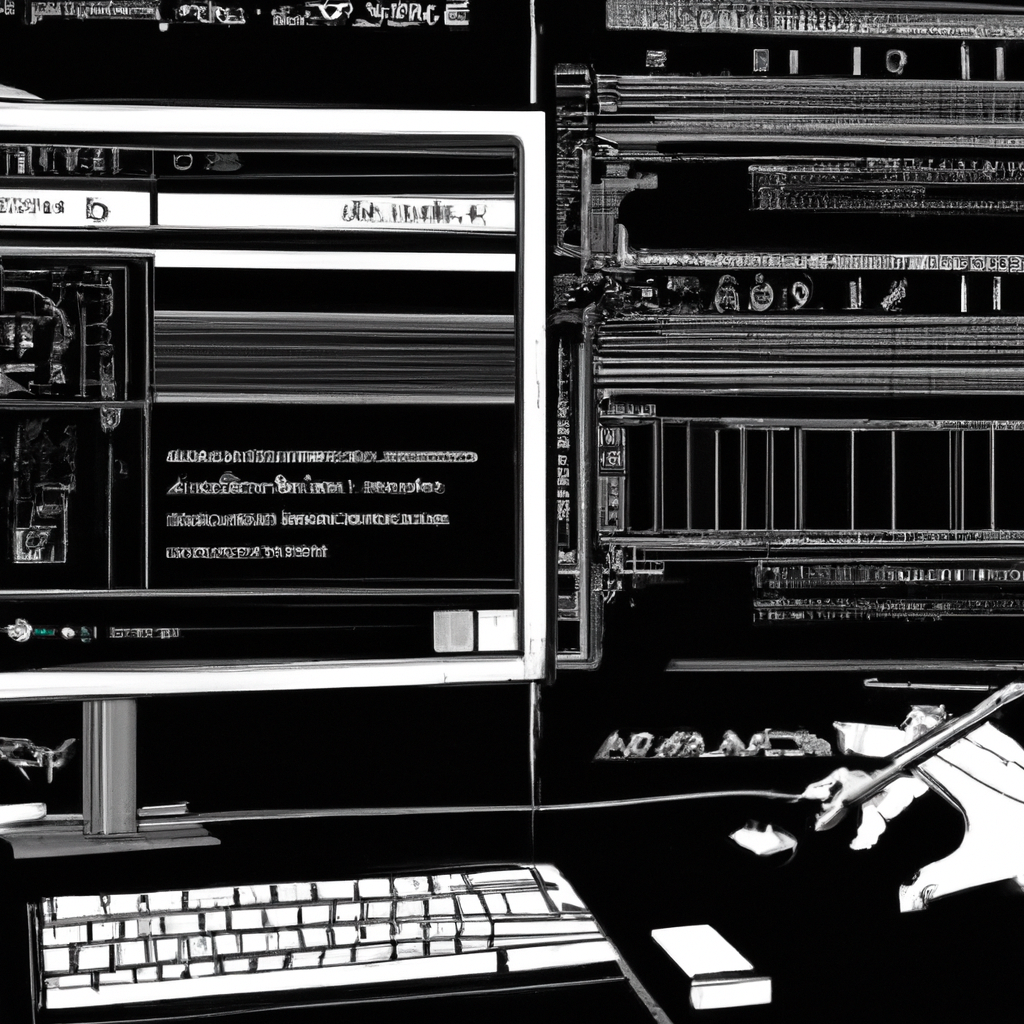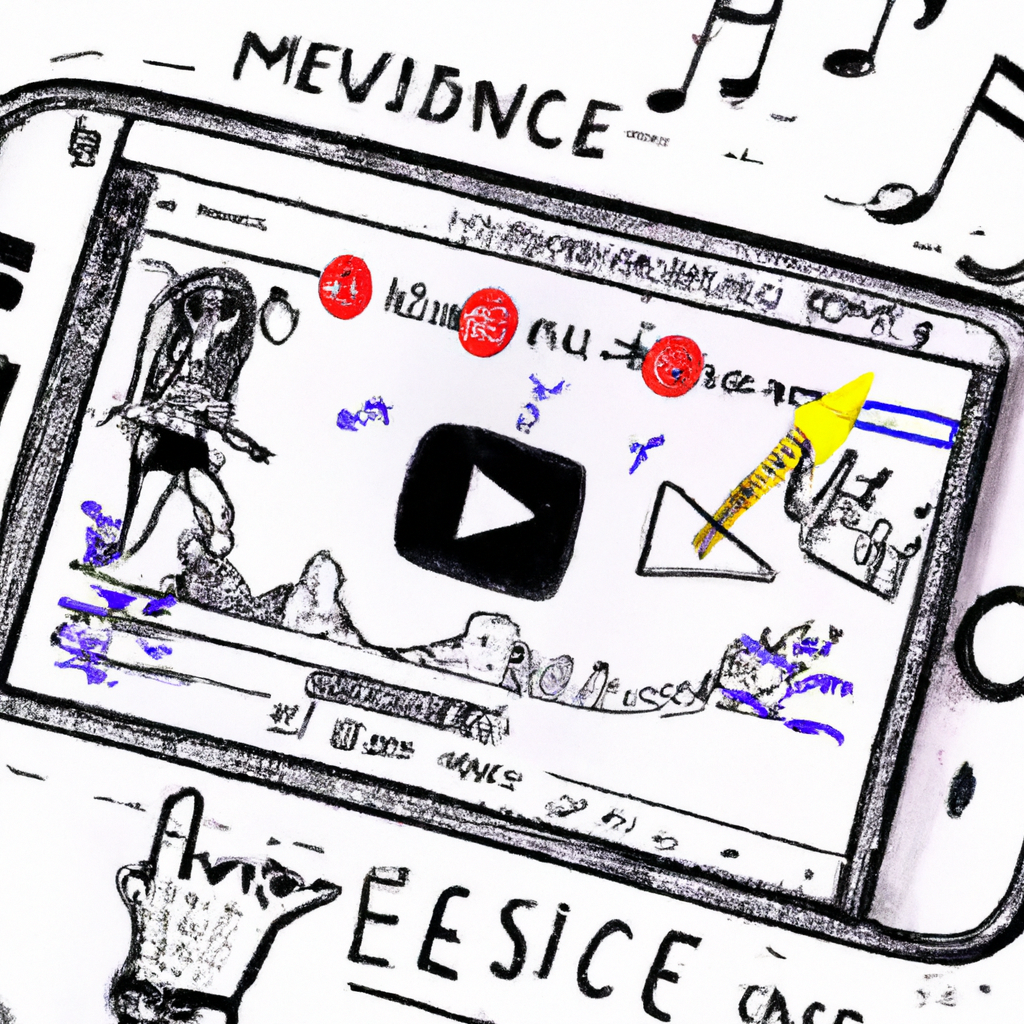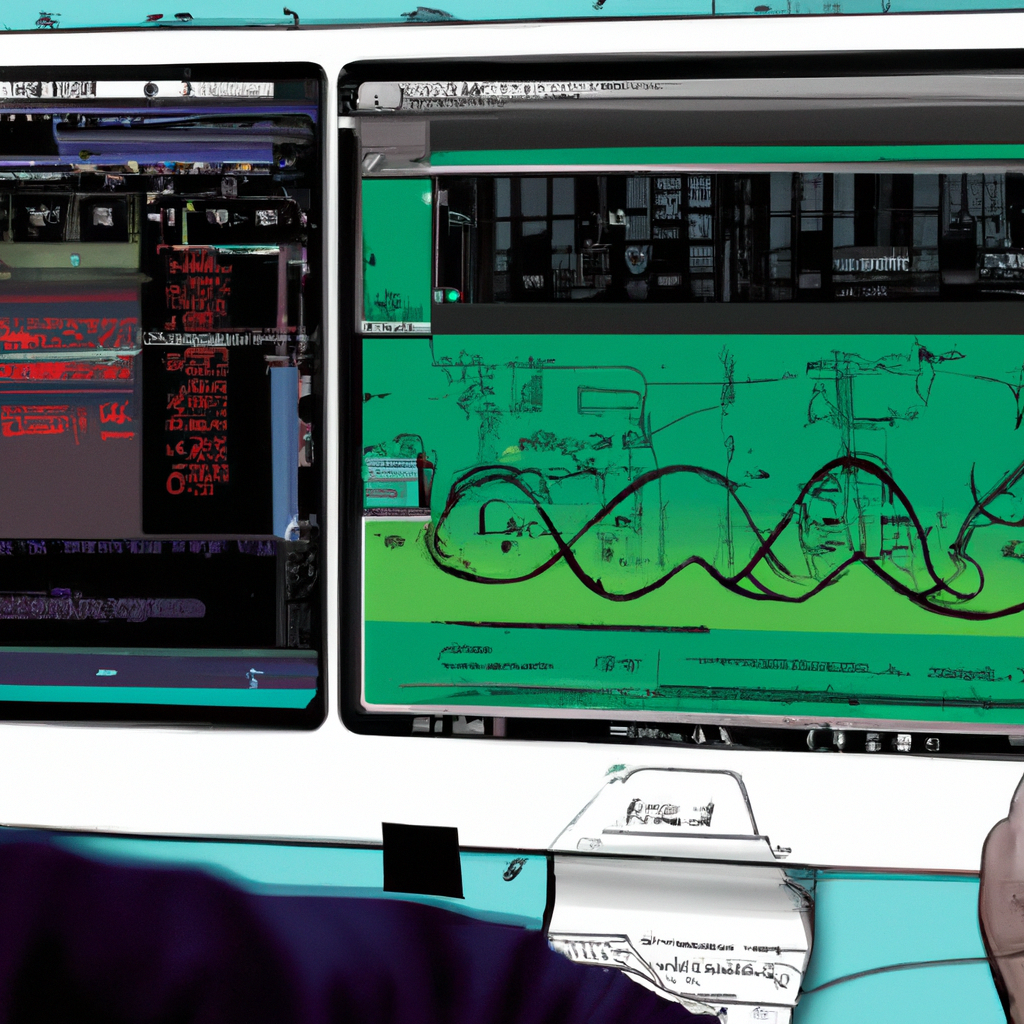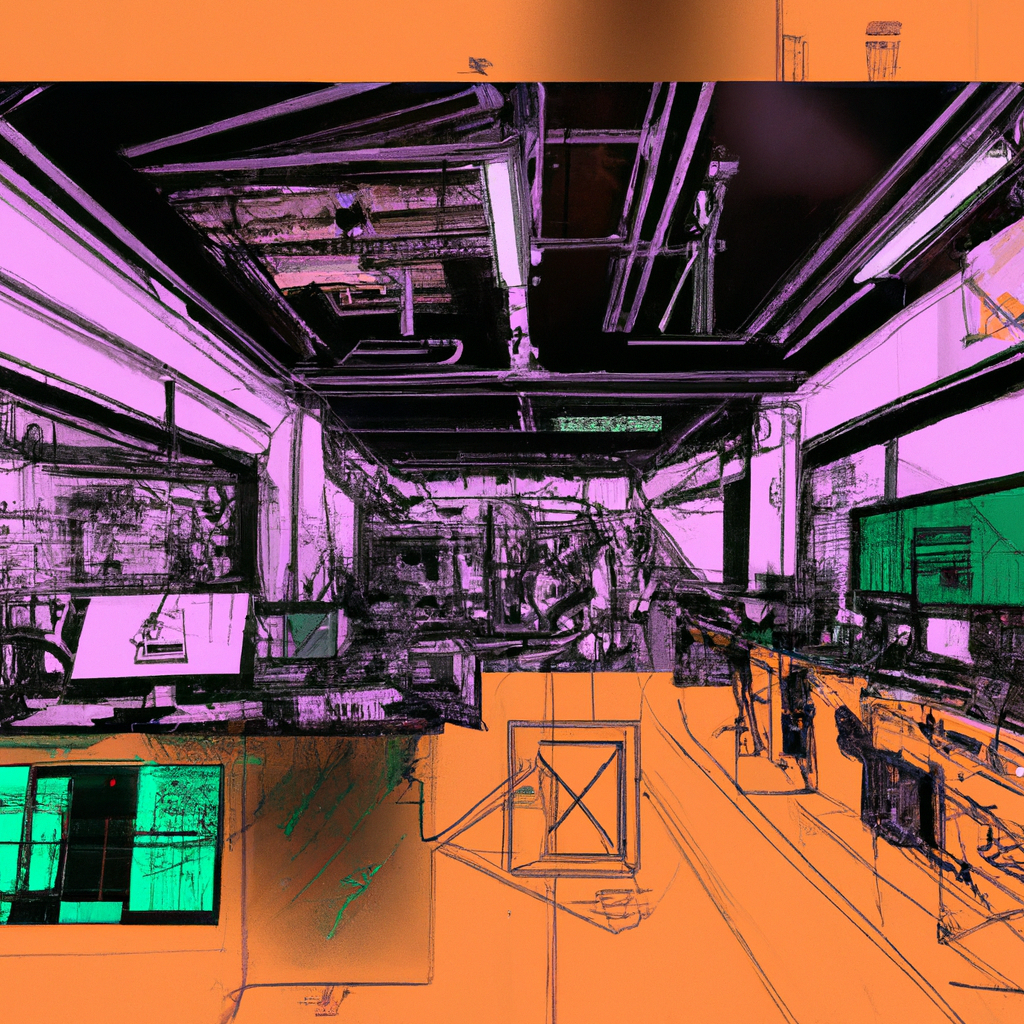Dear Readers,
AI plays a crucial role in our blog, helping us manage our time more effectively to keep the content flowing. While AI assists with content creation, which may lead to occasional spelling or grammar errors, our primary goal remains clear: to deliver meaningful insights to you. For important matters, please consult a specialist.
Thank you for your understanding and support.
Best regards,
Education.com.cy
Executive Summary
In the modern digital age, the realms of coding and music production have increasingly intertwined, creating a symbiotic relationship that enhances both fields. This article explores how coding has revolutionized music production, the skills required to excel in this hybrid domain, and the broader implications for the music industry and social media. It delves into the evolution of music production, the role of coding in sound design and composition, the impact of social media, and future trends. Through detailed case studies and examples, the article highlights the transformative power of coding in music production.
Introduction
In the modern digital age, the intersection of coding and music production has revolutionized the way we create, experience, and interact with music. This fusion has not only democratized music production, making it accessible to a broader audience, but it has also introduced innovative ways to manipulate sound and create immersive audio-visual experiences. The synergy between coding and music production is a testament to how technology can enhance artistic expression, allowing creators to push the boundaries of what is possible in the realm of music.
Main Sections
The Role of Coding in Music Production
Introduction
The intersection of coding and music production has revolutionized the way we create, experience, and interact with music. This article delves into the pivotal role coding plays in modern music production, exploring its impact on sound design, music composition, and the overall production process.
The Evolution of Music Production
Music production has come a long way from analog recording techniques to the digital age. The advent of digital audio workstations (DAWs) and sophisticated software has democratized music creation, allowing anyone with a computer to produce high-quality music. At the heart of this transformation lies coding, which powers the tools and technologies that have reshaped the music industry.
Coding and Sound Design
Sound design is a critical aspect of music production, involving the creation and manipulation of audio elements to achieve desired sonic textures. Coding enables sound designers to develop custom plugins and virtual instruments, offering unprecedented control over sound synthesis and processing.
- Custom Plugins and Virtual Instruments: Programmers can create unique audio effects and instruments using languages like C++ and Python. These custom tools allow producers to craft distinctive sounds that set their music apart.
- Algorithmic Sound Generation: Coding facilitates the use of algorithms to generate sounds. Techniques such as granular synthesis and procedural audio rely heavily on coding to produce complex, evolving soundscapes.
Coding in Music Composition
Coding has also transformed the way music is composed. Algorithmic composition and generative music are two areas where coding plays a significant role.
- Algorithmic Composition: By writing algorithms, composers can generate music based on predefined rules and parameters. This approach can produce intricate compositions that might be challenging to create manually.
- Generative Music: Generative music systems use coding to create music that evolves in real-time, often responding to environmental inputs or user interactions. This dynamic form of music composition offers new possibilities for interactive installations and live performances.
Enhancing Music Production Workflows
Coding streamlines various aspects of the music production process, improving efficiency and creativity.
- Automation: Scripts and macros can automate repetitive tasks within DAWs, allowing producers to focus on the creative aspects of music production. For example, coding can automate the mixing process, adjusting levels and applying effects based on predefined criteria.
- Integration with Other Technologies: Coding enables seamless integration between music production software and other technologies, such as MIDI controllers and virtual reality environments. This integration enhances the creative potential of music producers.
Case Studies: Coding in Action
Several notable examples highlight the impact of coding on music production.
- Max/MSP and Pure Data: These visual programming languages allow musicians and sound designers to create custom audio and visual applications. They have been used in various projects, from interactive installations to live performances.
- SuperCollider: An environment and programming language for real-time audio synthesis and algorithmic composition. It has been used by artists and researchers to explore new sonic territories.
The Future of Coding in Music Production
The role of coding in music production is poised to grow as technology continues to evolve. Emerging trends such as artificial intelligence and machine learning are set to further transform the landscape.
- AI and Machine Learning: These technologies can analyze vast amounts of musical data to generate new compositions, suggest chord progressions, and even master tracks. Coding is essential for developing and implementing these advanced algorithms.
- Virtual and Augmented Reality: Coding will play a crucial role in creating immersive music experiences in virtual and augmented reality environments. These technologies offer new ways for artists to engage with their audiences.
Conclusion
Coding has become an indispensable tool in modern music production, offering new creative possibilities and enhancing the efficiency of the production process. As technology continues to advance, the synergy between coding and music production will undoubtedly lead to even more innovative and exciting developments in the world of music.

Impact of Social Media on Music and Emotions
Introduction
The intersection of music and social media has revolutionized the way we experience and interact with music. This article explores how social media platforms influence our emotional connection to music and how coding plays a crucial role in this dynamic.
The Emotional Power of Music
Music has always been a powerful medium for expressing and evoking emotions. Whether it’s the joy of a lively tune or the melancholy of a sad ballad, music can touch our hearts and minds in profound ways. This emotional connection is amplified when music is shared and experienced through social media.
Social Media as a Catalyst for Viral Music
Social media platforms like TikTok, Instagram, and YouTube have become essential tools for artists to promote their music. A catchy song can quickly go viral, reaching millions of users worldwide. This virality is often driven by user-generated content, such as dance challenges or lip-sync videos, which create a sense of community and shared experience.
The Role of Algorithms
Behind the scenes, algorithms play a significant role in determining which songs become popular. These algorithms analyze user behavior, such as likes, shares, and comments, to identify trending content. By understanding these patterns, social media platforms can promote specific songs to a broader audience, increasing their chances of going viral.
Music as a Reflection of Personal Experiences
Music often reflects our personal experiences and emotions. For example, songs about heartbreak resonate with listeners who have gone through similar experiences. This connection can be so strong that it feels like the song is speaking directly to the listener’s soul. Social media amplifies this effect by allowing users to share their stories and connect with others who have had similar experiences.
The Dark Side of Emotional Manipulation
While the emotional power of music can be uplifting, it can also be used to manipulate emotions. Social media platforms are designed to keep users engaged, and one way they achieve this is by promoting content that elicits strong emotional responses. This can lead to a form of emotional manipulation, where users are constantly exposed to content that reinforces specific feelings or beliefs.
The Role of Coding in Music Production
Coding is an essential skill in modern music production. From creating digital instruments to designing interactive music experiences, coding allows artists to push the boundaries of what is possible. Social media platforms rely heavily on coding to deliver seamless and engaging experiences for users.
Creating Interactive Music Experiences
One of the most exciting developments in music production is the creation of interactive music experiences. These experiences allow users to interact with music in new and innovative ways. For example, users can remix songs, create their own music videos, or even participate in live virtual concerts. Coding is the backbone of these experiences, enabling artists to create dynamic and engaging content.
The Future of Music and Social Media
As technology continues to evolve, the relationship between music and social media will only grow stronger. New platforms and tools will emerge, offering even more ways for artists to connect with their audience. Coding will remain a critical skill, enabling artists to create innovative and immersive music experiences.
Conclusion
The impact of social media on music and emotions is profound. By understanding the role of coding in this dynamic, we can appreciate the intricate ways in which technology shapes our emotional connection to music. As we move forward, it is essential to remain mindful of the potential for emotional manipulation and strive to create positive and meaningful experiences for all users.

Find out how the strategies discussed in the article
"How Teaching a Song Can Improve Your Child’s Learning and Well-Being"can help address internet addiction in children and teens.
Case Studies: Coding and Music Production
Introduction
The intersection of coding and music production has revolutionized the way we create, experience, and interact with music. This article delves into various case studies that highlight the transformative power of coding in music production, showcasing how technology can enhance creativity and emotional expression.
Case Study 1: The Role of Algorithms in Music Composition
Algorithms have become a fundamental tool in modern music composition. By analyzing patterns and structures in existing music, algorithms can generate new compositions that mimic the style of human composers. One notable example is the use of Markov chains, which predict the probability of a sequence of notes based on previous sequences. This technique has been employed in various music software to create compositions that are both innovative and coherent.
Example:
A prominent case is the use of the Markov chain algorithm in the software “Amper Music.” This AI-driven platform allows users to create original music by selecting a genre, mood, and instruments. The algorithm then generates a unique composition that can be further customized by the user. This case study illustrates how coding can democratize music production, enabling even those without formal musical training to create professional-quality music.
Case Study 2: Digital Audio Workstations (DAWs) and Coding
Digital Audio Workstations (DAWs) are at the heart of modern music production. These software platforms allow musicians to record, edit, and produce music using a computer. Coding plays a crucial role in the development and functionality of DAWs, enabling features such as real-time audio processing, virtual instruments, and automation.
Example:
One of the most popular DAWs, Ableton Live, incorporates Max for Live, a visual programming language that allows users to create custom devices and effects. Musicians and producers can write their own code to manipulate audio in real-time, creating unique sounds and effects that would be impossible to achieve with traditional instruments. This case study demonstrates the power of coding in expanding the creative possibilities of music production.
Case Study 3: Interactive Music Experiences
Coding has also enabled the creation of interactive music experiences, where the listener can influence the music in real-time. These experiences often involve the use of sensors, mobile apps, and web technologies to create a dynamic and immersive musical environment.
Example:
The “Inception” app, developed by RjDj, uses the microphone and sensors on a smartphone to create an interactive soundscape that changes based on the user’s surroundings and movements. The app uses real-time audio processing algorithms to manipulate the music, creating a unique experience for each listener. This case study highlights how coding can transform passive listening into an active and engaging experience.
Case Study 4: Music Visualization and Coding
Music visualization is another area where coding has had a significant impact. By translating audio signals into visual representations, coding allows for the creation of stunning visual effects that enhance the listening experience.
Example:
The software “MilkDrop,” a music visualization plugin for Winamp, uses a scripting language to create real-time visualizations that respond to the music. Users can write their own scripts to generate custom visual effects, resulting in a highly personalized and immersive experience. This case study illustrates the synergy between coding and music, where visual and auditory elements combine to create a multi-sensory experience.
Case Study 5: Social Media and Music Distribution
Social media platforms have become essential for music distribution and promotion. Coding plays a vital role in the algorithms that determine which content gets promoted and how it is presented to users.
Example:
TikTok’s algorithm, which uses machine learning to analyze user behavior and preferences, has been instrumental in making songs go viral. Artists and producers can leverage this platform to reach a global audience, often leading to overnight success. This case study underscores the importance of coding in the modern music industry, where social media algorithms can significantly impact an artist’s career.
Conclusion
These case studies illustrate the profound impact of coding on music production. From algorithmic composition and DAWs to interactive experiences and social media distribution, coding has opened up new avenues for creativity and expression in music. As technology continues to evolve, the synergy between coding and music production will undoubtedly lead to even more innovative and exciting developments in the future.

Future Trends in Music Production: Coding and Music Production
Introduction
The intersection of coding and music production is revolutionizing the way we create, experience, and interact with music. As technology advances, the role of coding in music production is becoming increasingly significant, offering new tools and possibilities for artists and producers. This article explores the future trends in music production, focusing on the integration of coding and its impact on the industry.
The Evolution of Music Production
Music production has come a long way from analog recording techniques to digital audio workstations (DAWs). The introduction of coding into music production has further transformed the landscape, enabling more sophisticated sound design, automation, and real-time collaboration. Coding allows for the creation of custom plugins, virtual instruments, and unique soundscapes that were previously unimaginable.
Custom Software and Plugins
One of the most exciting trends in music production is the development of custom software and plugins through coding. Producers can now write their own code to create bespoke tools tailored to their specific needs. This customization leads to unique sounds and effects that set their music apart from the rest. Open-source platforms and coding languages like Max/MSP, Pure Data, and SuperCollider are popular among producers for developing custom audio applications.
Generative Music and AI
Generative music, which uses algorithms to create music autonomously, is gaining traction. By coding algorithms that follow specific rules and patterns, producers can generate endless variations of a musical piece. Artificial Intelligence (AI) is also playing a significant role in this trend. AI-driven tools can analyze vast amounts of music data to compose new pieces, suggest chord progressions, and even mix tracks. This technology is not only enhancing creativity but also streamlining the production process.
Real-Time Collaboration
Coding is facilitating real-time collaboration in music production. Cloud-based DAWs and collaborative platforms allow multiple users to work on the same project simultaneously, regardless of their geographical location. This trend is breaking down barriers and enabling artists from around the world to collaborate seamlessly. Coding ensures that these platforms are robust, secure, and capable of handling complex audio data.
Interactive and Immersive Experiences
The future of music production is not just about creating audio but also about crafting interactive and immersive experiences. Coding is at the heart of this trend, enabling the integration of music with virtual reality (VR), augmented reality (AR), and interactive installations. These experiences allow listeners to engage with music in new and exciting ways, making them active participants rather than passive consumers.
Blockchain and Music Rights Management
Blockchain technology, powered by coding, is poised to revolutionize music rights management. By creating a decentralized and transparent ledger, blockchain can ensure that artists are fairly compensated for their work. Smart contracts, which are self-executing contracts with the terms of the agreement directly written into code, can automate royalty payments and licensing agreements. This technology promises to address long-standing issues in the music industry related to copyright and revenue distribution.
Educational Tools and Resources
As coding becomes more integral to music production, educational tools and resources are evolving to meet the demand. Online courses, tutorials, and coding bootcamps are making it easier for aspiring producers to learn the necessary skills. Platforms like Sonic Pi and EarSketch are designed to teach coding through music, making the learning process engaging and accessible.
Conclusion
The integration of coding in music production is opening up a world of possibilities for artists and producers. From custom software and generative music to real-time collaboration and immersive experiences, coding is driving innovation in the industry. As technology continues to evolve, the future of music production will undoubtedly be shaped by the creative potential of coding. Embracing these trends will not only enhance the creative process but also redefine how we experience and interact with music.

Conclusion
The Synergy of Coding and Music Production
In the modern digital era, the intersection of coding and music production has revolutionized the way we create, experience, and interact with music. This synergy has not only expanded the boundaries of artistic expression but also transformed the music industry into a dynamic and innovative field. As we delve deeper into this convergence, it becomes evident that coding is not merely a technical skill but an essential tool that empowers musicians and producers to push the limits of creativity.
The Evolution of Music Production
Historically, music production was a labor-intensive process that required physical instruments, analog equipment, and extensive manual effort. The advent of digital technology and coding has dramatically altered this landscape. Today, music production is predominantly digital, with software and coding playing a pivotal role in every aspect of the process. From composing and arranging to mixing and mastering, coding has streamlined workflows, enhanced precision, and opened up new possibilities for experimentation.
Coding as a Creative Tool
Coding in music production is akin to a painter’s brush or a sculptor’s chisel. It allows artists to manipulate sound in ways that were previously unimaginable. Through coding, producers can create complex soundscapes, design unique audio effects, and automate intricate processes. For instance, digital audio workstations (DAWs) like Ableton Live, Logic Pro, and FL Studio offer scripting capabilities that enable users to customize their production environment, automate repetitive tasks, and develop innovative plugins.
The Role of Algorithms and Artificial Intelligence
Algorithms and artificial intelligence (AI) have further amplified the impact of coding on music production. AI-driven tools can analyze vast amounts of musical data to generate compositions, suggest chord progressions, and even mimic the style of renowned artists. These technologies not only assist in the creative process but also democratize music production by making advanced techniques accessible to a broader audience. As a result, aspiring musicians can produce high-quality tracks without the need for expensive equipment or extensive training.
Enhancing Collaboration and Distribution
Coding has also revolutionized the way musicians collaborate and distribute their work. Online platforms and cloud-based services enable artists from different parts of the world to work together in real-time, sharing ideas and files seamlessly. Additionally, coding has facilitated the development of music streaming services, social media platforms, and digital distribution channels, allowing artists to reach global audiences with ease. This interconnectedness has fostered a vibrant and diverse music community, where creativity knows no bounds.
The Psychological Impact of Music and Coding
The psychological impact of music is profound, influencing emotions, memories, and behaviors. Coding, when combined with music, can enhance this impact by creating immersive and interactive experiences. For example, virtual reality (VR) and augmented reality (AR) technologies, powered by coding, can transport listeners into new auditory dimensions, where they can engage with music in multisensory environments. These experiences can evoke powerful emotional responses, making music more impactful and memorable.
Challenges and Ethical Considerations
Despite the numerous benefits, the integration of coding and music production also presents challenges and ethical considerations. The reliance on algorithms and AI raises questions about originality, authorship, and
Thank you for reading our article on Coding and Music Production. We highly value your feedback and invite you to take a brief survey to share your thoughts and experiences. Your responses will be kept confidential.
Dear Readers,
Welcome to my blog, where technology, music, and visual arts come together to spark creativity and growth. By subscribing, you’ll become part of a vibrant community committed to exploring and learning in these areas.
Select the type of engagement that suits you best:
Join us and enjoy tailored content and direct support suited to your interests.
